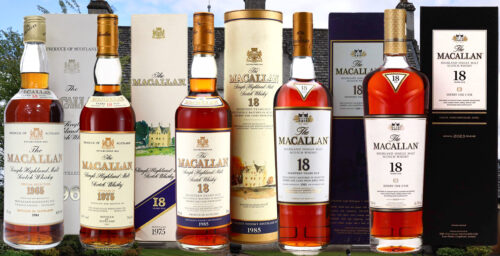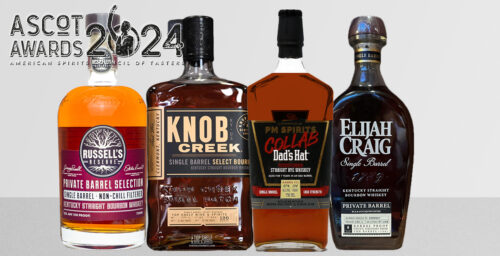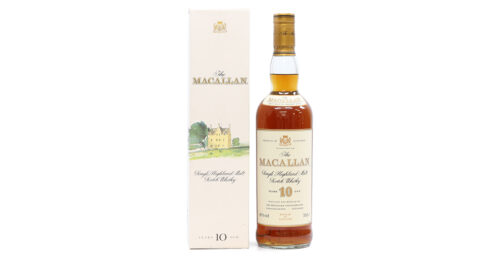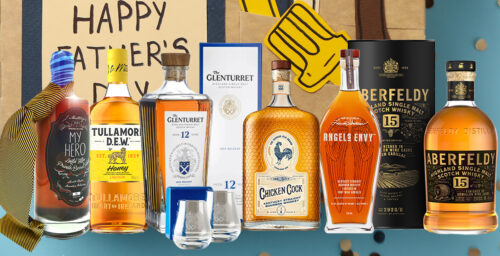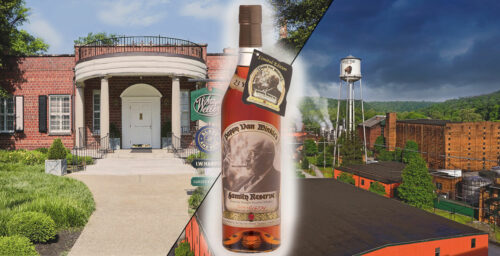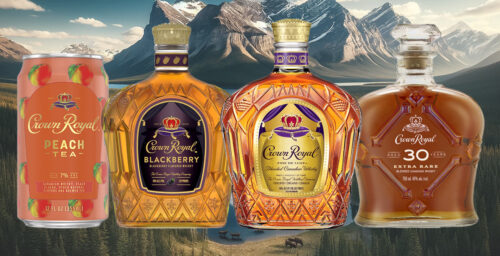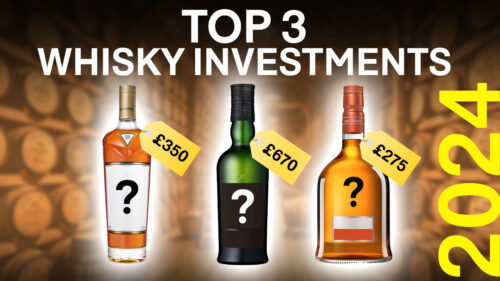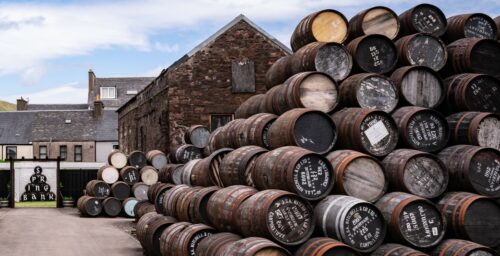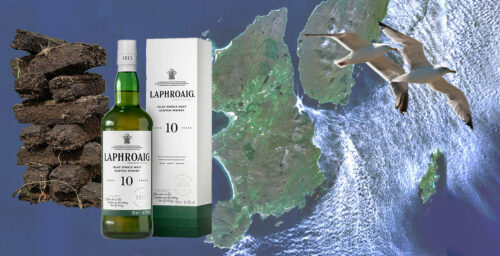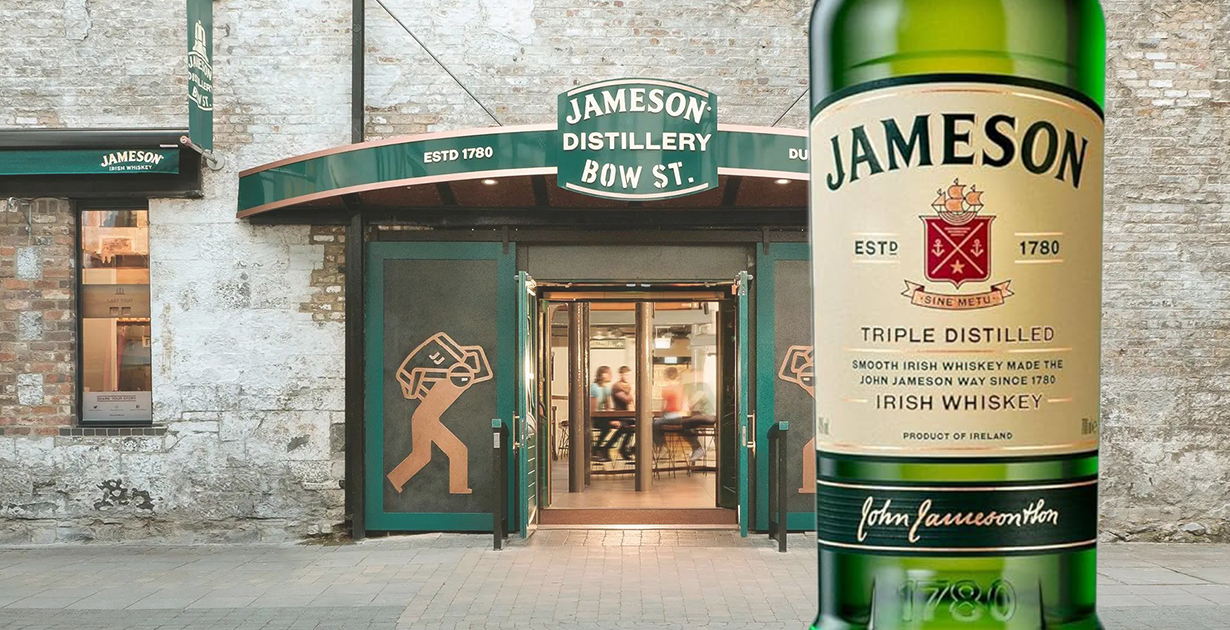
Jameson is the world’s bestselling Irish whiskey brand, selling 31 million bottles annually. Owned by French beverage group, Pernod Ricard, since 1988, the brand has expanded exporting 90 percent of the 4.7 million cases of Jameson whisky produced each year. If you’ve ever been curious about this monumentally popular Irish whiskey, we explore Jameson’s origins, distillery history, and production. Here are six things you didn’t know about the iconic Jameson brand.
1. John Jameson came from Scotland
John Jameson the brand’s namesake, was born in Alloa, Scotland in 1740. Originally trained as a lawyer, Jameson moved to Ireland in the 1770’s, with his wife Margaret Haig (daughter of Scottish distiller John Haig).
Margaret’s cousins, the Stein family, founded Dublin’s Bow Street distillery in 1780, employing Jameson as general manager before he acquired ownership in 1805. In 1810, the distillery was officially renamed as ‘The John Jameson and Son Irish Whiskey Company’ – the brand was quickly nicknamed as Jameson whiskey.
John Jameson passed away on the 3rd of December 1823, at the age of eighty-three. Four of Jameson’s sons followed him into the distilling business in Ireland, with John Jameson II taking over the Bow Street site.
William and James Jameson partnered with the Steins to found Dublin’s Marrowbone Lane distillery, originally calling the business Jameson and Stein, before it was subsequently renamed, William Jameson & Co.
Despite a rivalry that emerged between the Bow Street and Marrowbone Lane Jameson distilleries, the Jamesons became the dominant distilling family in Ireland.
2. Jameson Irish Whiskey hasn’t been produced in Dublin since 1975
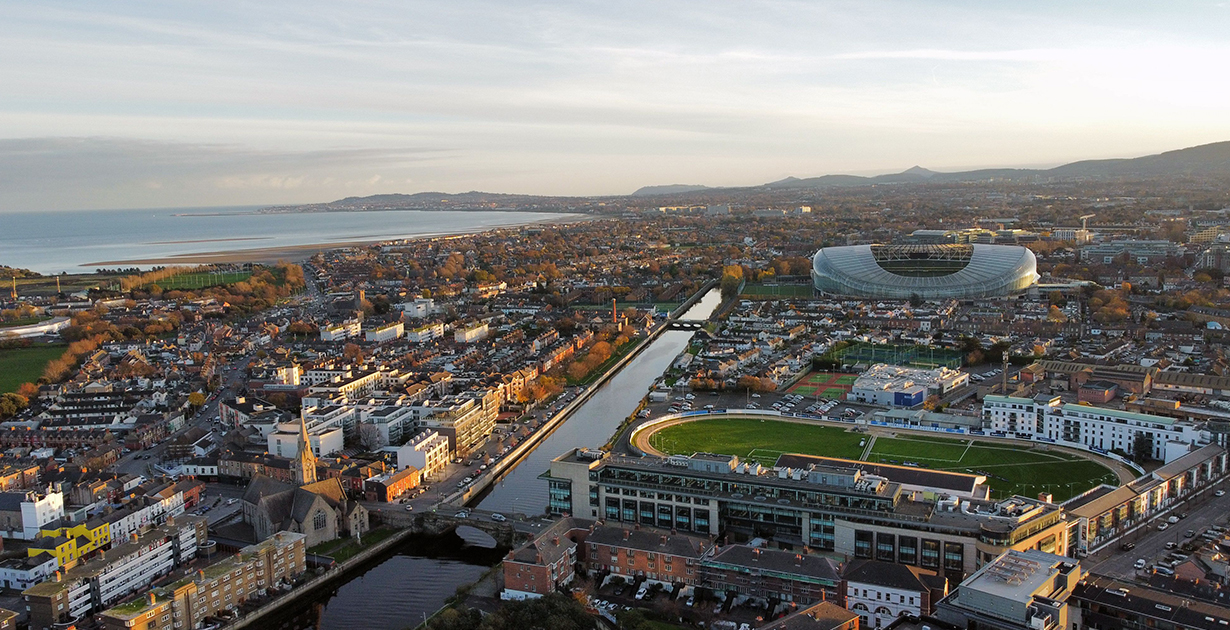
When the Bow Street distillery was established in 1780, over 100 breweries and distilleries were operating in Dublin, provoking fierce competition. Under John Jameson’s management, the distillery prospered and expanded, becoming a ‘city within a city’.
By 1870, the Jamesons employed hundreds of workers in the surrounding Smithfield area, including coopers, carpenters, blacksmiths, painters, and stonemasons. By the 1880s, the Bow Street distillery site stretched across almost 6 acres of Dublin’s city center.
In 1966, Jamesons merged with John Power & Son and the Cork Distilleries Company to form the Irish Distillers Group, when the emergence and growth of Irish whiskey required a larger production capacity. On 5th June 1970, the last pot still whiskey was distilled at Jameson’s Bow Street site – although the distillery remained operational until 1975.
From July 1975, production shifted to the Irish Distillers Group’s Midleton Distillery complex in County Cork – which now produces whiskey for brands including Jameson, Powers, Redbreast, Green Spot, and Midleton Very Rare.
The Old Jameson Distillery at Bow Street reopened as a museum in 1997. Between 2007 – March 2016, the distillery underwent a $12.6 million renovation, which saw the attraction awarded the ‘World’s Leading Distillery Tour’ at the 25th World Travel Awards in 2018.
While Jameson’s whiskey is no longer distilled onsite, since 2016, Bow Street has been equipped with a functioning maturation warehouse, where the Jameson Bow Street 18 Year Old undergoes a finishing period before being bottled at cask strength.
3. Jameson’s Bow Street distillery was occupied during the Easter Rising
In April 1916, an armed insurrection by Irish Republicans, known as the Easter Rising, began in order to liberate Ireland and its people from British rule. While the uprising was occurring, the Republican rebels captured Jameson’s Bow Street site stationing a sniper on the distillery roof to oversee street fighting on nearby North King Street. Many rebel-controlled buildings were destroyed or heavily damaged, although Bow Street remained relatively unscathed.
Jameson’s company records and payroll accounts for April 24th-29th 1916, during the uprising state ‘All Employees Paid in Full’ – evidencing that the distillery employees were provided for during the turmoil.
4. Jameson uses locally sourced barley
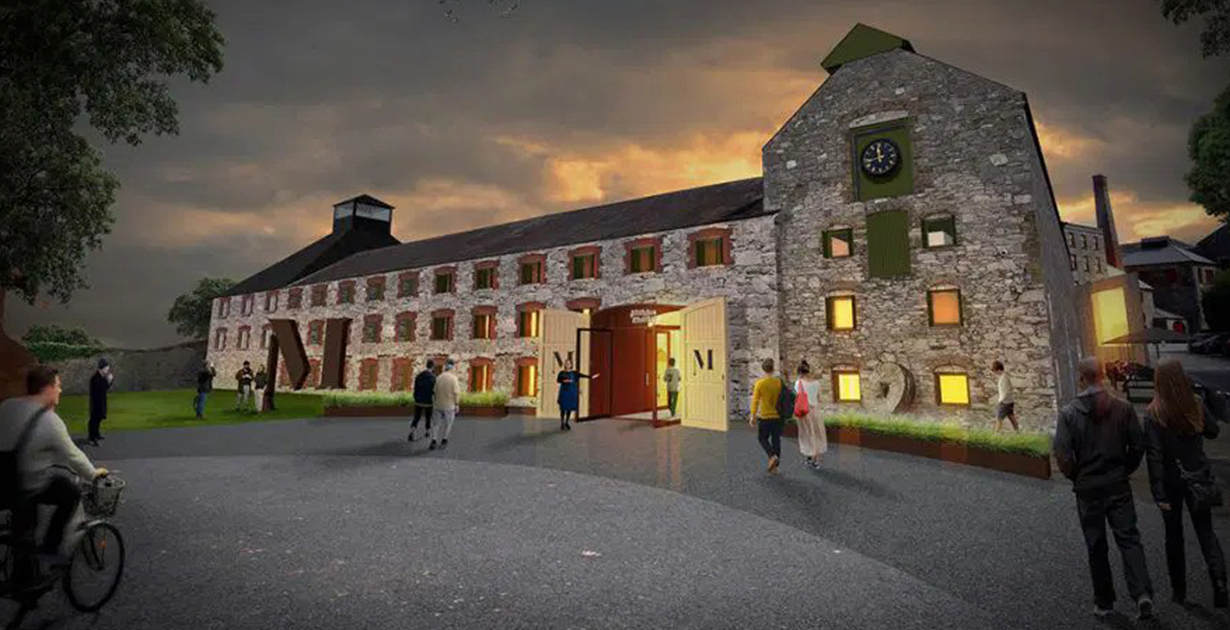
The Jameson brand uses a combination of malted and un-malted barley, which is locally sourced from Southern Ireland, working with over 200 farmers within 50 miles of the Midleton distillery. Jamesons sources grain from farmers with barley plots ranging from 15 to 700 acres.
The barley is combined with a local water source, drawing water from the Dungourney River which flows through the grounds of the Midleton distillery. A starchy bi-product produced during the whiskey distillation process is repurposed as feed for local cattle – with the Jameson brand endorsing sustainable and eco-friendly production.
The Irish whiskey is distilled in copper pot stills three times to ensure its smoothness.
5. Jameson Irish Whiskey wasn’t sold by the bottle until 1963
Before 1963, Jameson whiskey was only sold in bulk by the cask. Rather than dedicate limited resources to covering bottling costs, in the early years Jamesons sold casks to bars, bonders, and grocers domestically who would subsequently bottle the whiskey for bar sales or shop customers.
While the brand provided labels for bottles, and required cask customers to sign an annual agreement of good practice the system was open to exploitation –including mislabelling and watered-down casks. By 1963, Jameson was exporting to 68 markets worldwide, including exporting 15,000 cases annually to the United States.
Despite having partnered with a London bottling operation to supply export markets for many years, domestically Jameson did not take definite control of the spirit quality until 1963, when a bottling plant was installed at the Bow Street site – and ‘Jameson Ten’ became the first expression bottled at the distillery.
6. The Jameson motto means ‘Without Fear’
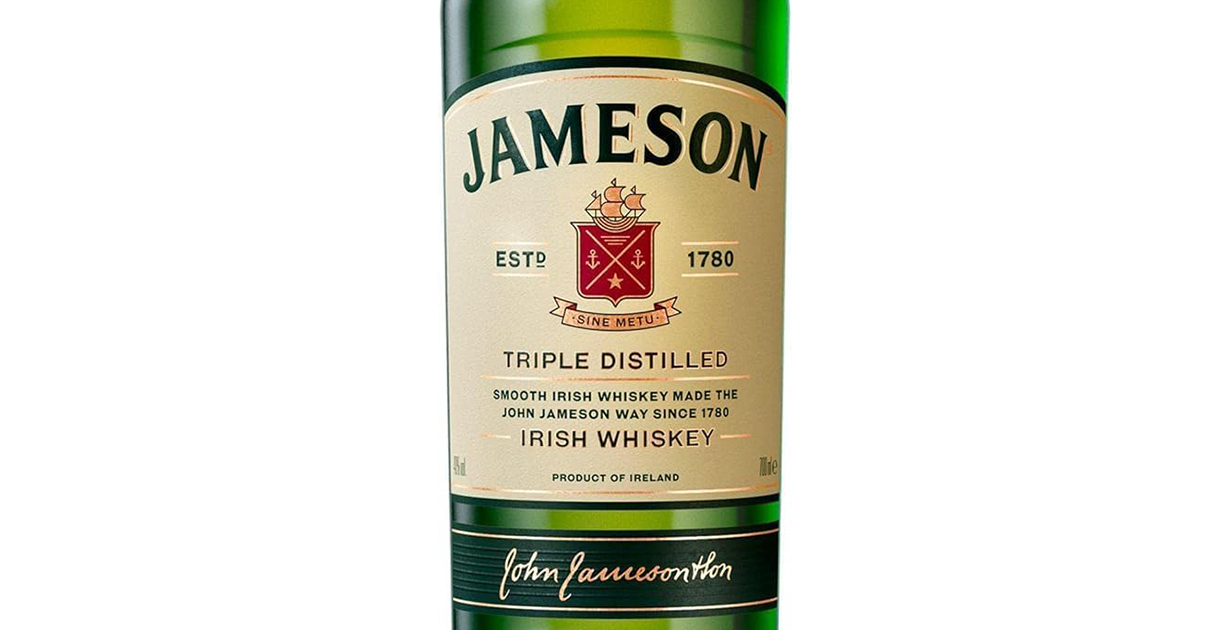
On every bottle’s brand label, the Jameson family’s heraldic crest can be seen – including the motto ‘Sine Metu’, which translates to ‘Without Fear’. Allegedly John Jameson’s forebears were granted the coat of arms in recognition of the family battling and pursuing pirates along Scotland’s west coast in the 17th century – hence the ship which is also depicted on the arms.
Adopted by John Jameson’s Irish whiskey, the ‘Sine Metu’ motto has proven apt – the brand has survived the restrictions of two world wars, the Irish Civil War, and the challenge of American Prohibition. Jameson’s latest rival is Irish mixed martial artist Connor McGregor, who declared his own whiskey brand ‘Proper Twelve’ would overtake Jameson in American sales – it hasn’t.

